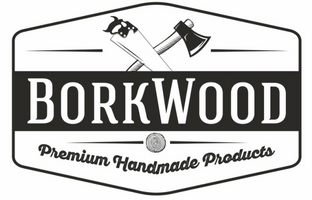Scent Science: The Art of Perfume Laboratory Creation
Perfume is much more than just a pleasant aroma; it is an intricate blend of art and science, a sensory experience that can evoke memories, emotions, and even moods. The world of perfumery is a fascinating realm where creativity meets chemistry, and this is exemplified in the meticulous processes carried out in a perfume laboratory. In this article, we will delve into the art of perfume creation, exploring the science behind it, the ingredients involved, and the steps taken to craft the perfect scent.
The Basics of Perfume Composition
At its core, perfume is a mixture of fragrant essential oils, aroma compounds, and solvents. The primary components of perfume are categorized into three main parts: top notes, middle (or heart) notes, and base notes. Each layer plays a crucial role in the overall fragrance experience:
Top Notes:
These are the initial scents that you perceive when you first apply a perfume. They are typically light and evaporate quickly, often citrusy or herbal. Examples include bergamot, lemon, and lavender.
Middle Notes:
Also known as heart notes, these emerge after the top notes fade. They usually form the core of the fragrance and provide depth. Floral, spicy, and fruity notes, such as jasmine, rose, and cinnamon, often dominate this layer.
Base Notes:
These are the foundation of the perfume, lasting the longest on the skin. Rich and heavy, base notes like vanilla, musk, and sandalwood anchor the fragrance and give it lasting power.
The art of balancing these three layers is where perfumers shine, employing their olfactory skills to create harmonious compositions.
The Role of the Perfumer
Perfume creation is often regarded as a highly specialized craft. The perfumer, or “nose,” is the individual responsible for designing fragrances. This profession requires not only a finely tuned sense of smell but also an understanding of chemistry and the properties of various ingredients.To become a skilled perfumer, one typically undergoes years of training, often in prestigious fragrance schools or through apprenticeships. They learn to identify and categorize scents, understand how different ingredients interact, and master the techniques of blending.
The Ingredients of Fragrance
The raw materials used in perfume creation can be classified into three categories: natural, synthetic, and semi-synthetic.
1. Natural Ingredients
Natural ingredients are derived from plants, flowers, and other organic sources. Essential oils, absolutes, and resins are commonly used in perfumery. Examples include:
Essential Oils:
Extracted through steam distillation or cold pressing, essential oils like lavender, rose, and eucalyptus add distinctive aromas.
Absolutes:
More concentrated than essential oils, absolutes are obtained through solvent extraction and are used for delicate flowers that cannot withstand the heat of distillation.
Resins:
Substances like frankincense and myrrh add rich, warm notes to perfumes and are often used in base notes.
2. Synthetic Ingredients
Synthetic fragrance compounds are man-made chemicals that mimic natural scents or create entirely new aromas. These ingredients allow for greater consistency and versatility in perfume creation. Common synthetic compounds include:
Vanillin:
A synthetic version of vanilla that provides a sweet, creamy aroma.
Linalool:
A floral scent that is commonly found in both natural and synthetic fragrances.
3. Semi-Synthetic Ingredients
Semi-synthetic ingredients are derived from natural sources but are modified through chemical processes. These materials can enhance the scent profile or improve the stability of the fragrance. For example, certain alcohols and esters may be derived from natural sources but modified for use in perfumery.
The Process of Creation
Creating a perfume is a meticulous process that involves several steps:
1. Concept Development
Every fragrance begins with a concept. The perfumer may draw inspiration from a particular theme, memory, or emotion. This stage involves brainstorming ideas, identifying target demographics, and establishing a desired mood or atmosphere.
2. Ingredient Selection
Once a concept is in place, the perfumer selects the raw materials that will bring the fragrance to life. This involves testing various combinations of essential oils, aroma compounds, and other ingredients to determine which best aligns with the envisioned scent.
3. Formulation
During this phase, the perfumer creates a formula, carefully balancing the proportions of each ingredient. This is often done in small test batches, allowing for adjustments and refinements. The perfumer must consider how the fragrance will evolve over time on the skin, ensuring that the top, middle, and base notes work in harmony.
4. Aging and Maturation
Once the formula is established, it is aged to allow the ingredients to meld and mature. This aging process can take anywhere from a few weeks to several months, during which the scent profile can change significantly.
5. Finalization and Packaging
After the aging process, the perfume undergoes final adjustments before being packaged. This may include filtering to remove impurities and diluting the fragrance with alcohol or other solvents to achieve the desired concentration. The final product is then bottled and labeled, ready for distribution.
The Future of Perfume Creation
As the fragrance industry evolves, so too do the methods and technologies used in perfume creation. Advances in synthetic chemistry are opening new doors for perfumers, allowing for the development of innovative scent profiles that were previously unattainable. Additionally, growing interest in sustainability has led to a focus on ethically sourced natural ingredients and eco-friendly packaging. The rise of personalized fragrances is also changing the landscape of perfumery. Consumers are increasingly seeking unique, bespoke scents that reflect their individual tastes and preferences. This trend is prompting perfumers to explore new avenues for customization and creativity.
Conclusion
The art of perfume creation is a captivating blend of science and creativity, where each fragrance tells a story through its carefully crafted notes. From the initial concept to the final bottle, the journey of a perfume is a testament to the skill and passion of the perfumer. As we continue to explore and innovate within this fragrant realm, the future of scent promises to be as rich and varied as the ingredients that inspire it. Whether you are a seasoned fragrance lover or a curious newcomer, the world of perfumery invites you to indulge your senses and discover the magic of scent.







